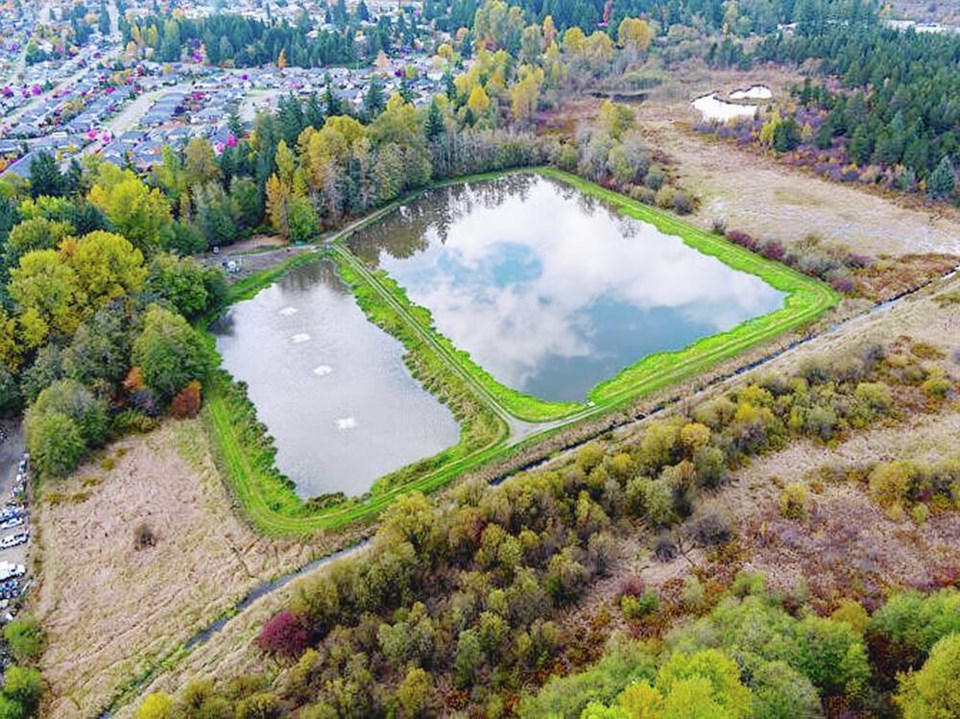The Village of Cumberland is staging an alternative approval process in the hopes of borrowing $2.5 million to help pay for a new wastewater-treatment system, replacing one that is getting failing grades from the provincial and federal governments.
“At the end of the day, we do not have a choice, our wastewater system must be improved now,” Mayor Vickey Brown said in an interview. “There’s no question it needs to be done.”
This is a long-standing issue in the community south of Courtenay. The treatment system has been out of compliance with its provincial permit since 1999, a 2018 report to council stated.
Water quality doesn’t meet standards in the permit, first issued in 1967 and later updated.
Concerns start with the potential impact on fresh water. After treatment, water is discharged into Maple Lake Creek which meets up with the Trent River running into Baynes Sound on the east side of Vancouver Island.
Brown said the wastewater-treatment system, using lagoons, “functions very well until your population starts to boom and climate change introduces atmospheric rivers and heat domes, which changed the dynamic in the lagoons.”
At one point, the province imposed a fine of $185,000, which was later reduced through mediation with the understanding that Cumberland is working towards a liquid-waste management plan to address the matter.
“We have an agreement that as long as we are moving the project forward we won’t be fined by the province,” Brown said.
The federal government, also unhappy with the water quality, sent an enforcement warning to the village in February.
“They informed us that we could be fined up to $1 million a day because we are discharging into a fish-bearing stream, the Trent River,” Brown said.
The upgraded system is designed to remove man-made toxins, restore degraded ecosystems and release safe water into the creek and river. The plan includes a new reed bed to further filter water.
Treatment system upgrades include improving wastewater screening, changing the flow path in the lagoons and adding more aeration, adding nutrients to remove phosphorous, and using environmentally friendly disinfection.
“We are doing some really innovative extra treatment,” Brown said, citing the planned reed bed with special bio-char (a carbon-rich material) filtration.
The province has accepted Cumberland’s liquid-waste management plan, said Rob Crisfield, village operations manager. Once the upgrading is completed he expects water quality to be “above and beyond” provincial permit requirements.
Under the current system, solids in the wastewater settle in the lagoons, which have to be dredged every 10 to 15 years. Under the new system, the treatment will remove solids, Crisfield said.
Also planned is stream restoration and some wetland enhancement, he said.
Crisfield said he believes the federal concern is about a high rate of ammonia in the water. “But that should all be dealt with through theses upgrades.”
Similar to other capital projects in recent years, Cumberland, with a population of 4,447 in 2021, has been hit with higher than expected costs for its upgrade.
The original $16.7-million price tag rose because of higher material costs, unexpected conditions on the site, delays in detailed design and a partial re-design to deal with climate changes, the village said in a notice to residents. This is the largest capital project the community has taken on.
If approved, the annual parcel tax on a property would increase by $113 per year, rising to $312.
Hard copies of completed elector response forms are to be submitted to the village office by 4 p.m on June 11.
A referendum, typically more expensive, needs a 50 per cent plus one vote to be successful. In Cumberland, the alternative system requires at least 10 per cent (348) of electors to sign a form opposing borrowing for it to fail.
>>> To comment on this article, write a letter to the editor: [email protected]



